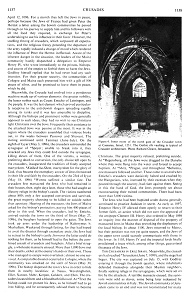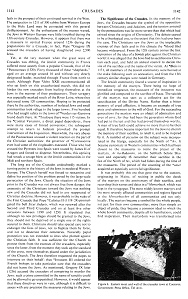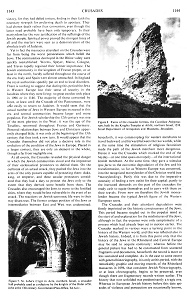Crusades 07
Pogroms against the Jews during the crusades - and the consequences
Encyclopaedia Judaica: Crusades, vol. 5, col. 1136: Ruins of Aqua Bella,
a Crusader farm or manorhouse near Jerusalem, c. 1168 C.E.
from: Crusades; In: Encyclopaedia Judaica 1971, vol.5, col. 1135-1145
Presentation with supplements by Michael Palomino (2006)
















